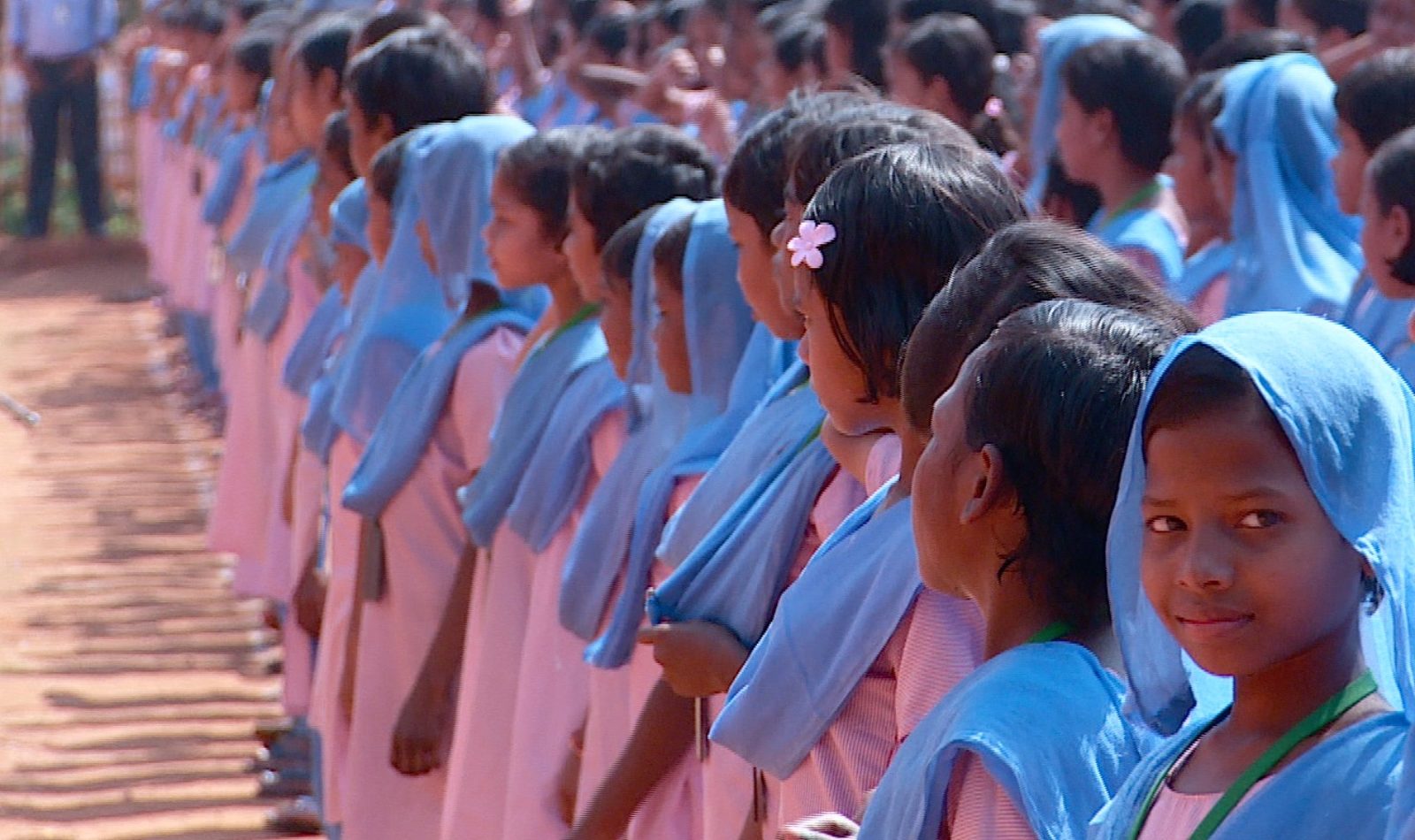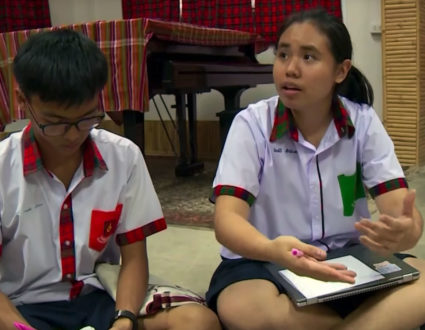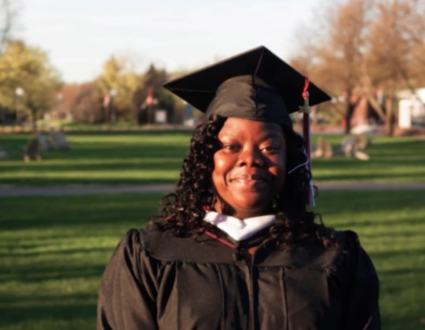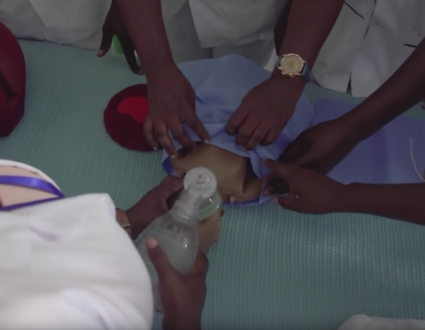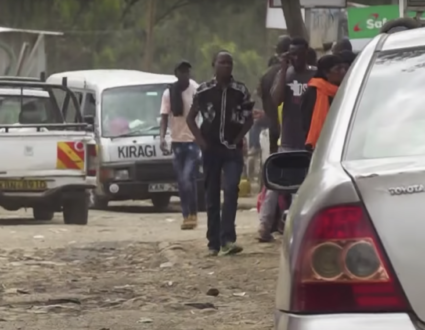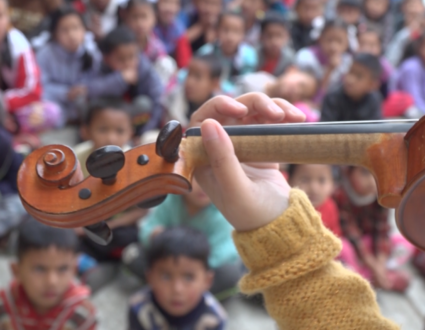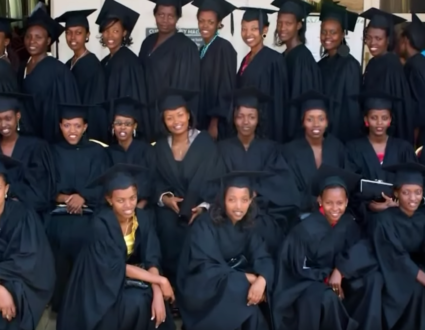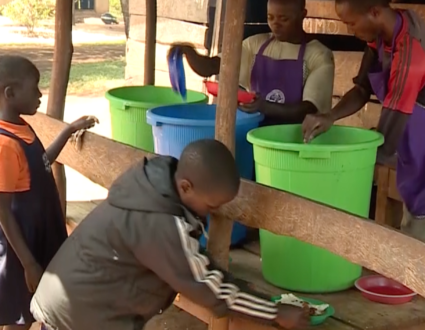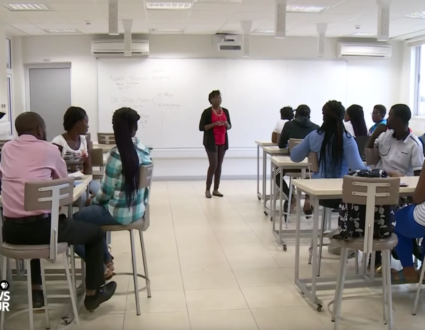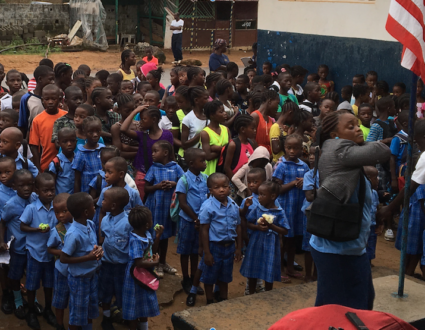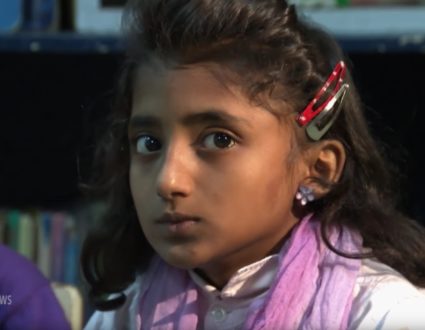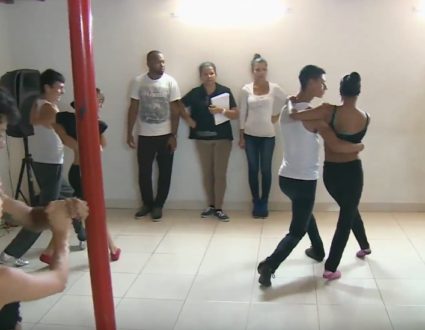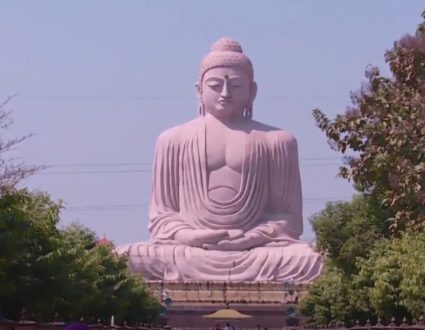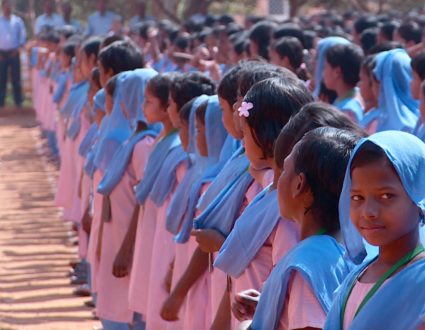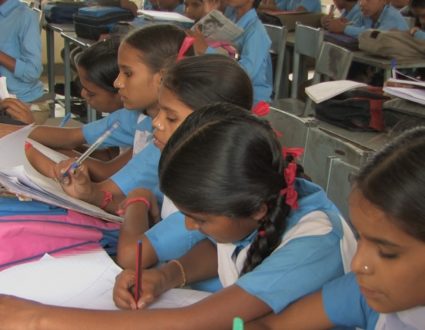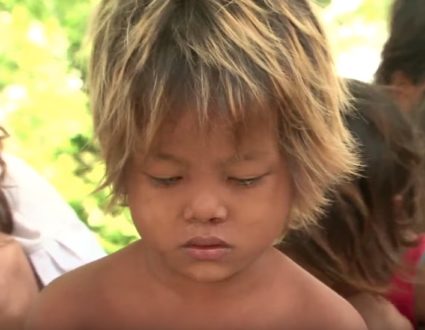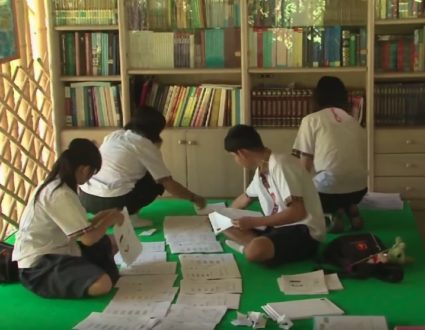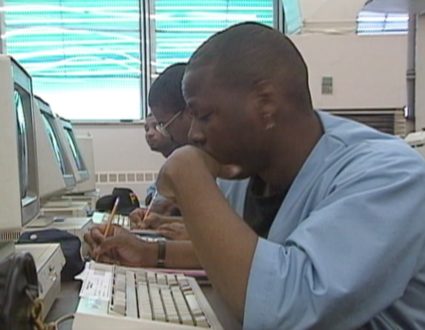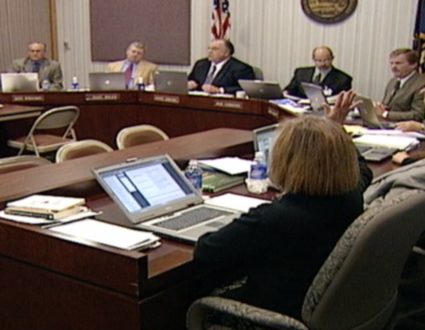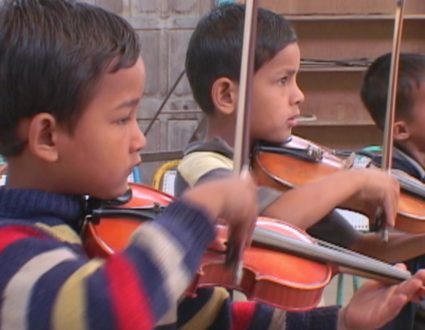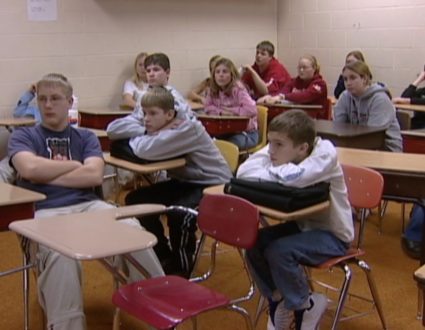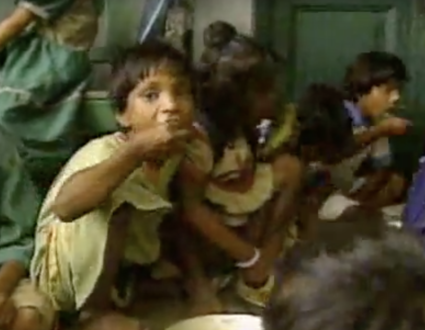GWEN IFILL: Next: bringing opportunity to a vast hidden population of aboriginal children in India.
Special correspondent Fred de Sam Lazaro visited one school that is trying to break the cycle of poverty on a massive scale.
His report was produced in partnership with the Pulitzer Center on Crisis Reporting and is part of our series Agents for Change.
FRED DE SAM LAZARO: The 18,000 students at the Kalinga Institute of Social Sciences, only half of them were gathered in this assembly, have two things in common. They come from India’s so-called tribal communities, and they’re extremely poor.
The school offers grades one through 12, and is an ambitious attempt to transform their lives, the brainchild of Achyuta Samanta, a 47-year-old entrepreneur.
ACHYUTA SAMANTA, Kalinga Institute of Social Sciences (through translator): The children who come here to study, they are stricken with poverty and illiteracy, and their parents themselves have not had much of an education. My goal is to eradicate poverty through education and bring them into the mainstream.
FRED DE SAM LAZARO: Though not a tribal member himself, Samanta grew up in poverty. But he was able to use scholarships to get a college education.
In the ’90s, Samanta founded a private university, offering high-demand fields in engineering, business, and medicine, just as the Indian economy took off here in Eastern Bhubaneswar and in cities across India. Revenues from the Kalinga Institute of Industrial Technology largely fund the school for tribal children.
Samanta lives simply and takes no salary, and he says he simply wants to give tribal children the same opportunities he got.
ACHYUTA SAMANTA (through translator): The major difference between the urban poverty we see and the poverty among aboriginal people is that the aboriginal people who live in the forests are completely cut off, in terms of awareness of the outside world.
FRED DE SAM LAZARO: India has about 400 distinct aboriginal tribes who number perhaps 80 million. They have lived far outside the mainstream for millennia, in forests across central and eastern India.
British colonization and in recent times corrupt or absent governance and mining activity have all displaced tribal people and helped spawn a radical Maoist insurgency, says Macalester College professor James Laine.
JAMES LAINE, Macalester College: In terms of social status, they more or less translate as similar to untouchable castes. You’re completely left out, and someone comes along and says we’d like to create an egalitarian society. That might be very attractive to a young person of tribal background.
FRED DE SAM LAZARO: The Maoist movement is about four decades old, and has turned increasingly violent in recent years. In May, Maoist guerrillas ambushed a convoy and killed several regional political leaders and their bodyguards, the most recent of some 6,000 deaths over the years, many of innocent tribal members.
JAMES LAINE: There’s a big chunk of India which is largely forested where fundamentally the government doesn’t reach.
FRED DE SAM LAZARO: And it’s in one corner of the region, eastern Orissa state, that the Kalinga school has reached out.
ACHYUTA SAMANTA (through translator): Education offers the best alternative to the path of the Maoists.
FRED DE SAM LAZARO: Here, education begins with meeting the most basic needs on an industrial scale and free of charge to the students.
ACHYUTA SAMANTA: Now they’re going for lunch.
FRED DE SAM LAZARO: How many students?
ACHYUTA SAMANTA: It is approximately now 8,000-plus are going for lunch.
FRED DE SAM LAZARO: Eight thousand?
These students followed 10,000 others who have just finished. It takes four shifts of 45 minutes to get everyone their lunch, most days a staple rice and lentil curry. They will be back a few hours later for supper. With the exception of the actual cooking, students help out with almost everything: serving food, cleaning, even producing their own clothing.
ACHYUTA SAMANTA: For us, the challenge is finance. If I would have more finance, I would have been able to give them more comfortable…
FRED DE SAM LAZARO: With more money, he said he’d provide better food and more comfortable living conditions. Dormitories are so crowded, some younger children must share bunks.
The academic challenge is even greater. The school has to teach students from over 60 tribes with distinct languages and customs.
ACHYUTA SAMANTA (through translator): Our major concern was how to bring all these children under one roof and mold a single curriculum without sacrificing their own heritage and traits. So over the years, we have tried to strike a balance.
FRED DE SAM LAZARO: Students spend time in craft work and programs to help preserve and retain indigenous traditions and languages. Classes are taught in the official regional language, Oriya, until high school, when students switch to English.
We caught some of them practicing one evening.
STUDENT: And you see the students are studying.
FRED DE SAM LAZARO: They marveled at what for them certainly were uncrowded classrooms and other images of everyday life in America. Both pictures and this conference room were donated by the U.S. Embassy, one of several foreign missions that have offered some support to the school.
STUDENT: There is the flag of USA flag. It shows how they love their country very much.
FRED DE SAM LAZARO: And on a scale not usually seen in India, this school places huge emphasis on sports, to build discipline and camaraderie. Students have all sorts of options, the Indian sport of kabaddi, basketball, and even American baseball.
But the hands-down popular sport is rugby. The game has taken many students far from their rural homes. It began with a chance visit from members of a Bombay rugby team a few years ago and caught on quickly.
ACHYUTA SAMANTA: So, this is 2011, London. This is 2007 London.
FRED DE SAM LAZARO: Kalinga teams have participated in tournaments in Australia and England sponsored by professional rugby organizations. Almost as heady as winning this tournament over a South African team was the chance to travel abroad, to tour London, says senior Hadi Majhi.
HADI MAJHI, rugby player (through translator): We trained in Calcutta for the tournament. Prior to leaving, we were given English lessons, shown how to use the toilet, and they taught us table manners.
FRED DE SAM LAZARO: His teammate and fellow senior Rajkishore Murmu says their success on the pitch reinforced a message the school tries to convey.
RAJKISHORE MURMU, rugby player (through translator): We have learned in this school to never think of ourselves as inferior to anybody else, and I think others respect us, also.
Rugby has taught me a lot of things, most importantly discipline, which is critical when you’re learning the intricacies of the game. For example, I know now if I suddenly encounter a tiger, I will know how to dodge it.
FRED DE SAM LAZARO: For parents, having children in school means fewer hands to help out with the daily struggle for survival. But Hadi’s father, Mongola Dhangda Majhi, says he’s happy to have secured his son’s future.
MONGOLA DHANGDA MAJHI, father (through translator): He’s already gotten more than I got in my entire lifetime. There’s no going back. There is nothing in our village. Maybe in the future, my son will be able to help bring better facilities to our area, a hospital or medical clinic or some kind of school.
FRED DE SAM LAZARO: Hadi and Rajkishore, like other Kalinga graduates, can take advantage of seats reserved for them at the colleges founded by Samanta. He says most of these students opt to remain close to home, where they’re most urgently needed.
DR. ACHYUTA SAMANTA (through translator): I don’t want these children, once educated, to remain primarily in urban areas. Rather, we would like them to be agents of change in their own communities.
FRED DE SAM LAZARO: To do that, he plans to open 20 branches of the Kalinga Institute of Social Sciences in rural communities across the region.
The Kalinga Institute
In eastern India, 18,000 extremely poor children from tribal communities attend a school that offers an opportunity to transform their lives. In partnership with the Pulitzer Center for Crisis Reporting, special correspondent Fred de Sam Lazaro reports on a social entrepreneur who wants to open more schools to reach more kids.
Related Links:Kalinga Institute of Social Sciences
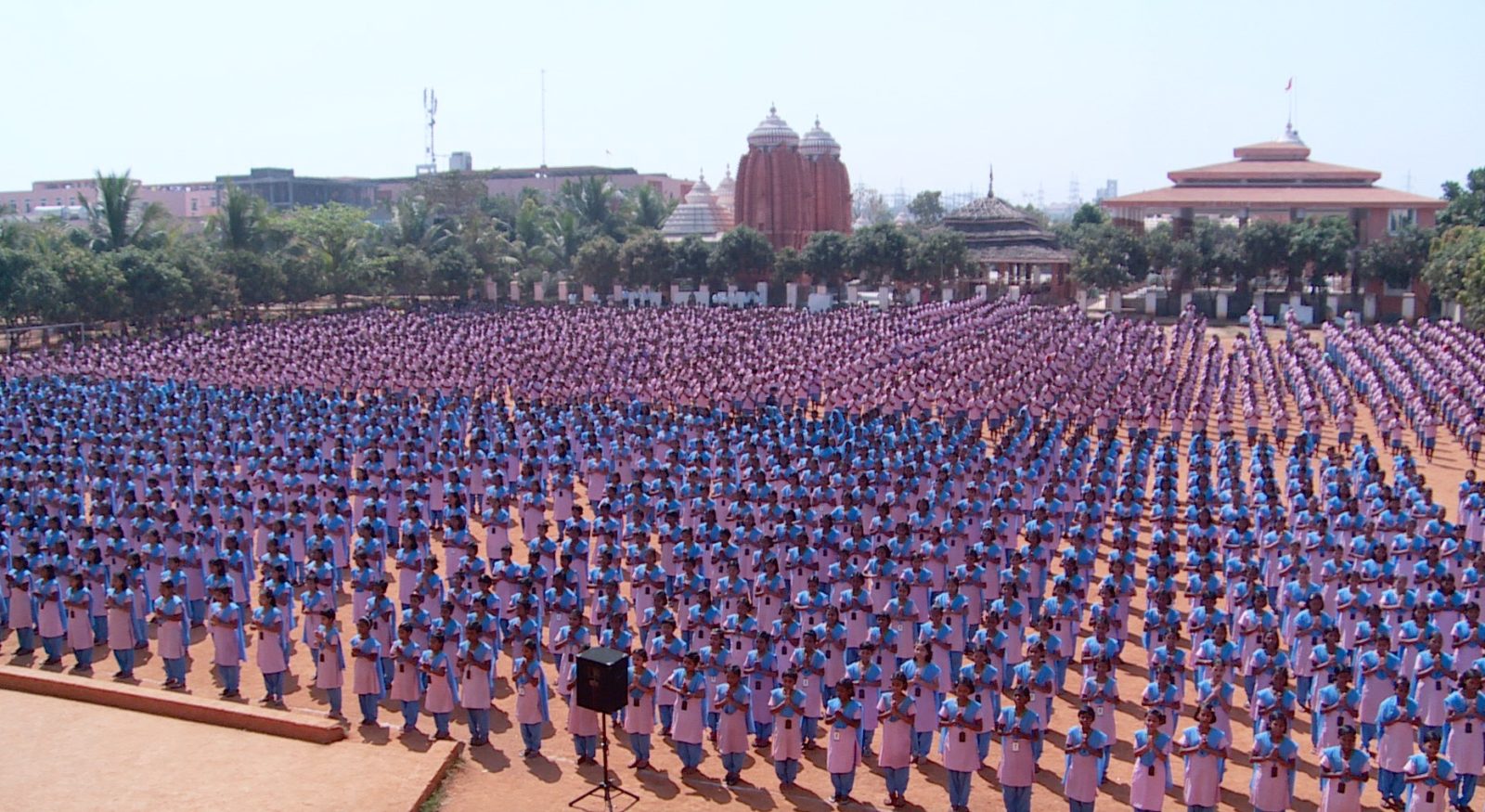
The 18,000 students at the Kalinga Institute of Social Sciences have two things in common.
They come from India’s so-called tribal communities, and they’re extremely poor.
ACHYUTA SAMANTA
“The children who come here to study, they are stricken with poverty and illiteracy, and their parents themselves have not had much of an education. My goal is to eradicate poverty through education and bring them into the mainstream. … The major difference between the urban poverty we see and the poverty among aboriginal people is that the aboriginal people who live in the forests are completely cut off, in terms of awareness of the outside world.”
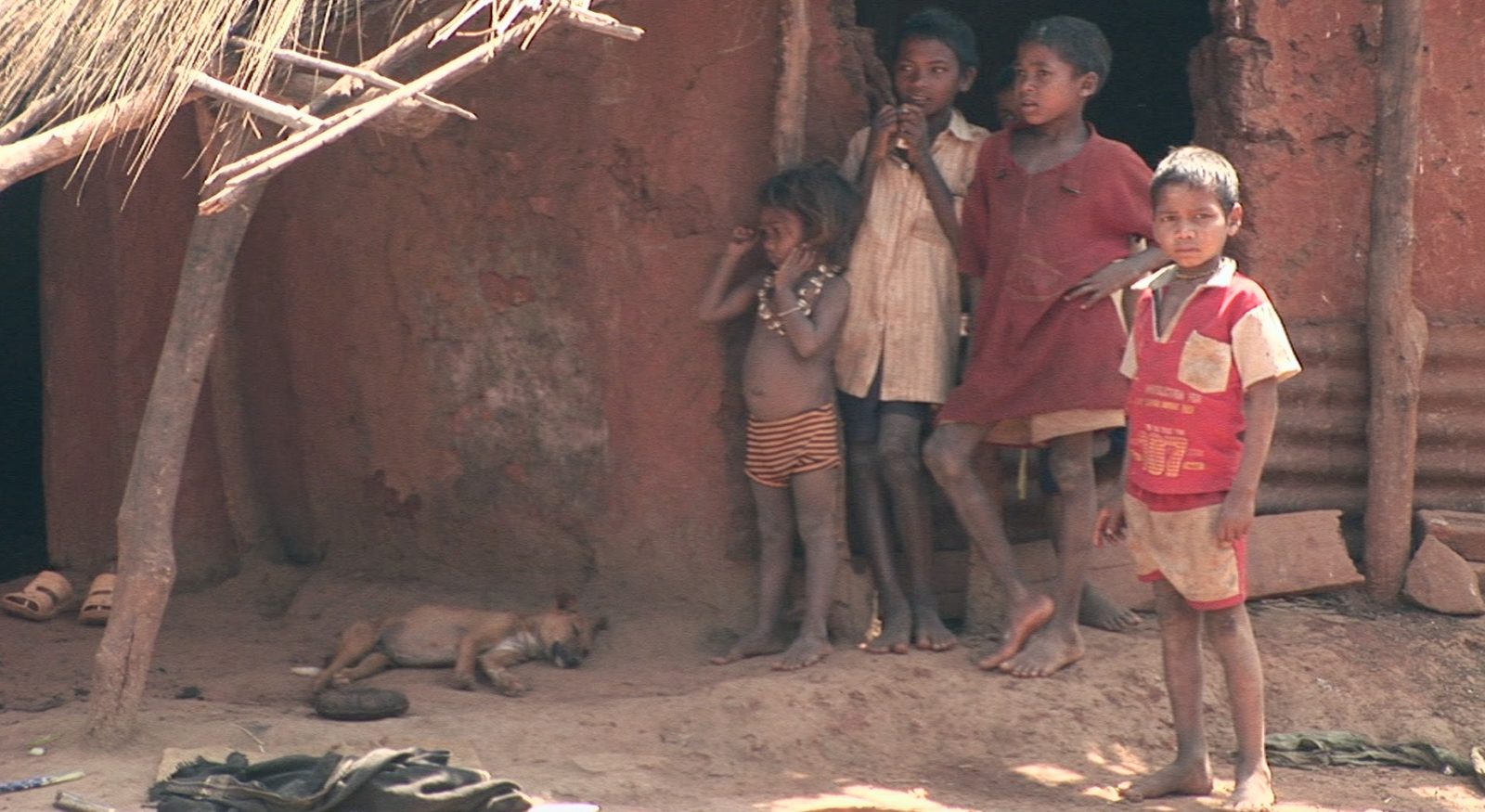
Breaking the Cycle
The goal is to eradicate poverty through education and to bring the children into mainstream society
